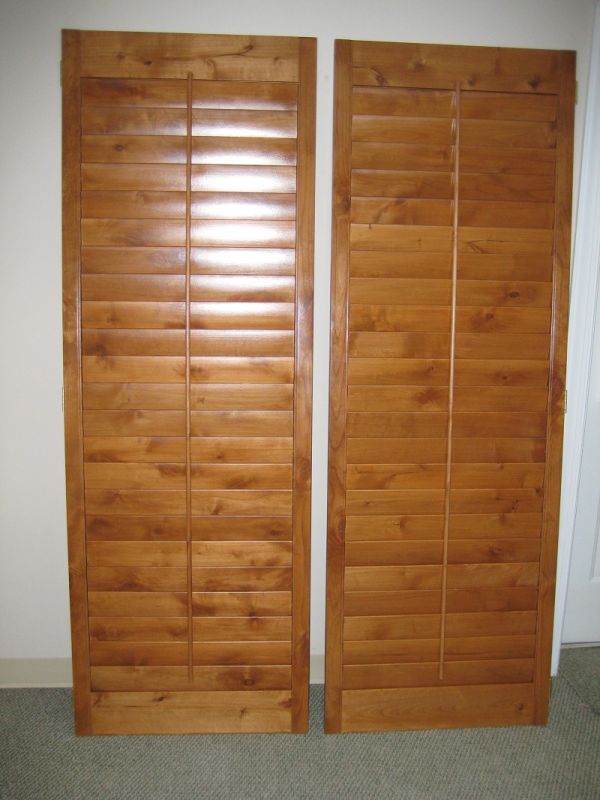Knotty Alder Bar
Is the softness of Knotty Alder a problem in a bar situation where the wood could encounter some abuse? July 28, 2012
Question
I am designing a bar for a customer's game room, made out of knotty alder for a rustic look, and I am running into some issues.
All the bars we have looked at for ideas have either been built out of mahogany or oak, nothing rustic. Because of the characteristics/softness of alder, I am not sure if the bar edge moldering and the butcher block countertop would hold up to the abuse. I am planning on using a 2-part on all the horizontal surfaces, but I am not sure if that would be enough. We're not writing off the possibility that women will be dancing on the bar.
If I was to go with alder, I would use clear alder for all the butcher block and edge molding. Another possibly is to use maple on the main bar top and try to stain it to match the alder (the alder is just getting a clear finish, no stain). Not really liking the idea of mixing species, but I'm open to ideas.
Second issue, the bars we have looked at all have massive pillar looking stiles that were either fluted or had an applied molding. The customer liked the massive look, but I'm not sure how to incorporate it into a rustic knotty wood. I don't think I want to flute knotty wood or do an applied molding, but I need to do something to dress up the stiles. Any ideas?
Forum Responses
(Cabinetmaking Forum)
From contributor J:
If you're using knotty alder, does it really matter if it gets banged or beat up? You want the rustic look. I have seen a bar or two out of rustic alder that was pretty elaborate. As far as the rest of the design goes, I think it is as much what you like as it is what goes well. My supplier has a mid-grade alder. They call it cabinet grade. It is not quite as rustic as the knotty. You might see if that lends itself to your design a little better.
From contributor M:
We use knotty alder in shutters fairly often. We pick out any loose or large knots that cause structural failure in a panel. Of course, what we use has probably been selected for the making of shutter components and would be somewhat more clear than what you may receive from a lumber supplier. I find this to be a very attractive wood.

Click here for higher quality, full size image
From contributor D:
The knots and imperfections become the features, not to be cut out, but used in a way that is very different from the normal lumber that is used. Build the design but select the boards carefully. Alder is soft for the top rail, but for a personal bar and not a business, it may be fine. Maybe a nice opportunity for a contrasting but harder wood.
From contributor H:
Lay it on something firm/hard - lay a chain on it and take a rubber mallet and stamp a design in it.
From contributor A:
I did a knotty alder bar recently. It was stained with traditional cherry and then fluted to create a two toned accent. With an alder bar top it will get dinged and dented, but being rustic, that is part of the character. I used a traditional bar rail for the counter edge and about 6 coats of Waterlox for the countertop finish. I discussed finish options with the client and we agreed that it will get damaged (rowdy bunch) and they liked the fact that we could renew the look of the finish at any time with another coat of Waterlox. After six months the bar still looks great and there are some imprints of the bottom of a beer bottle where someone slammed it down on the bar, but on a rustic bar it adds character.
From contributor F:
You might consider knotty alder on an MDF substrate for the bar top. Solid alder only comes in 8 or 10 foot lengths. The MDF would get banged up less than solid material. Edge with solid stock in whatever profile suits the design. For argument's sake, you could also use this material for applied moulding on flat panels. You can distress the solid stock and glaze the low spots to achieve a rustic appearance. Then let nature take its course.
